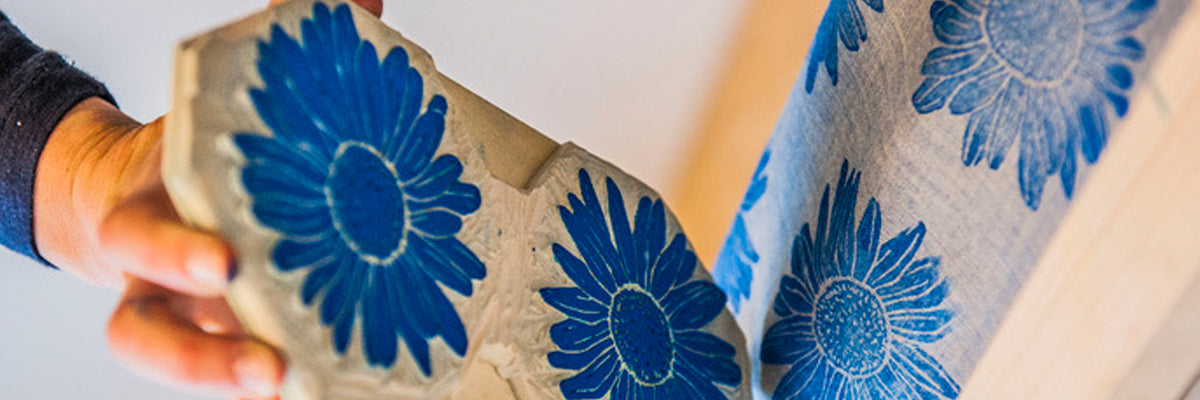- Regular Price
- $ 19.99
- Sale Price
- $ 19.99
- Regular Price
- $ 19.99
- Unit Price
- per

Printing is one of the most old-fashioned textile techniques there is, as it has been around since the oldest civilizations to the present day with the function of differentiating itself from other brands or cultures by adding design and color.
Researchers say that prints began in China with artisanal techniques such as wood block printing on natural fabrics and paper during the 4th and 5th centuries BC. This technique was also later known in Europe as relief or engraving.
Thanks to trade, exploration, colonization and the passage of time, new discoveries and advances in textile printing began.
As mentioned above there are different ways to make a print. Some examples are: stamps, frames, screen printing, sublimation, rollers or cylinders and digital printing. Later we will explain one by one so that you better understand the difference.
Stamps: Stamps are generally made with blocks of wood or metal, which are carved with a relief drawing that is covered with ink and transferred to the fabric. The carvings can be made of wood, linoleum or rubber.
In the event that the printing requires several colors, different blocks are used, that is, one per color, matching the drawings or sometimes even superimposing them, producing different color tones with the same print.

Frame: Printing on frames or better known as screen printing is one of the most economical methods and the colors are long-lasting on the fabric.
The technique works as follows:

Sublimation : Sublimation is a print that is made by means of a transfer paper transfer or sublimation of images or designs at high heat temperatures on a fabric, that is, the drawing that appears on the sheet is transferred to the fabric by means of of heat.
This process is carried out using a machine or irons and the designs can only be impregnated into polyester fabrics or at least 70% polyester.

The rollers or cylinders are rotating engraved designs that are fed or designated to each one with a specific color and the motifs for the prints are generated. Even in this process you can print 6 colors at the same time.

Rollers or cylinders and digital printing: Digital printing uses lasers controlled by a computer to inject ink directly into the fabric. This technique has quality, it is fast, the color is long-lasting, intense, the details are appreciated and what makes it different from others is that almost all textile compositions can be used, that is, natural, synthetic and artificial fibers.
However, it is important to ask the supplier or technician how much the color changes on the computer and in the print to be able to generate the changes before having it done. This process also has a higher cost compared to others.

Each of these techniques is prepared differently, they depend on the type of composition of a fabric and the result you want to give to a textile, whether texture, quality or a touch of color. Nowadays, thanks to technology, they can be done faster and easier.
Before finishing we want to let you know that when a designer generates a print he has to take into account the motif known as: the drawing, the modulation, this is the repetition that the module has, the streets, that is, avoiding spaces or gaps. and the rapport measure, the repetition of the modules, but with a specific measurement in the width and length of the fabric.
This can have horizontal, vertical or diagonal displacement and also
You can change the direction repetitions, in short, if you want to mirror, stagger, rotate, etc.


Do you think you can notice in the prints you have in your hand how many times the motif is repeated?
Author | Jimena Chavez
"Such information is for reference only, to obtain precise details about the use, qualities and care of our products, it is necessary to consult directly with your seller before making a purchase or receiving recommendations. "
0 comments